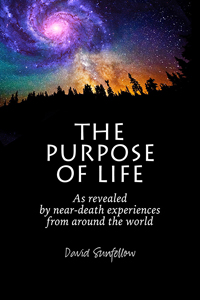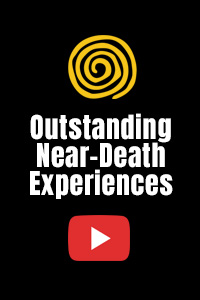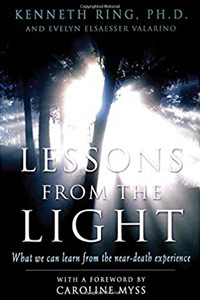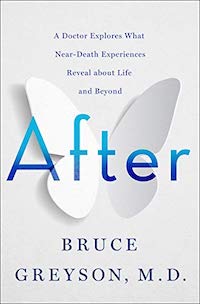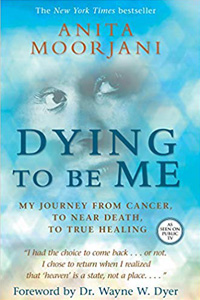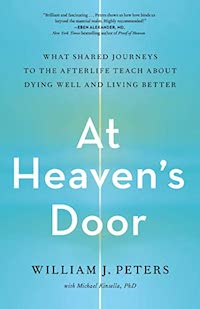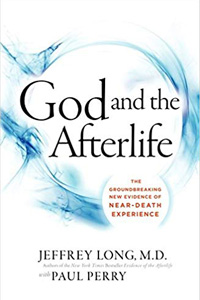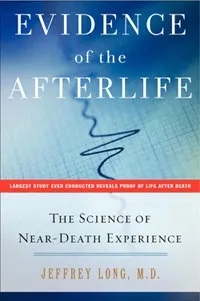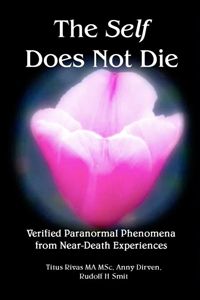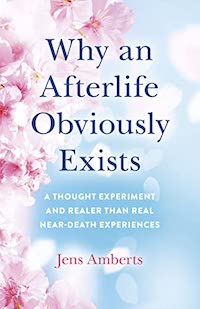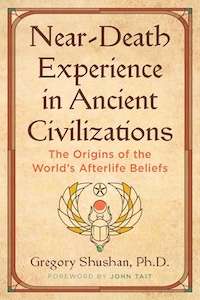The illustration of a hellish realm that appears at the top of this page comes from near-death experiencer Samuel Bercholz‘s book, A Guided Tour of Hell: A Graphic Memoir.
………….
The following conversation, which took place in July of 2017, was started by David Sunfellow on NHNE’s Near-Death Experience Facebook page. Excerpts from this conversation appear here because they were too long to post on Facebook and because they may be of interest to people who weren’t aware of the original Facebook conversation.
………….
Amphianda Etta Louise Baskett writes:
“I am just really not at all convinced that ‘bad’ deeds or thinking cause hellish NDEs. I think they happen far more randomly, and the only study I’ve ever seen states that this IS IN FACT THE CASE. And Ive read hundreds of NDEs myself, and it seemed to me that there was no correlation. And the folks at IANDS also seem to be of the same mind as I am on this issue, otherwise they would have updated their website with new studies and information. Sure, once in a while a person has a hellish NDE and they say they believe they deserved it. But that’s really RARE. So… If I am correct on this… as the studies I’ve seen do strongly imply I am correct, then it makes more sense for us to talk about that fact… The lack or correlation should be highlighted and discussed far more than telling folks they may have visit HELL if they think judgmental thoughts, or focus on materialistic living. Because if that’s NOT the truth, we are doing people a disservice by spreading very false ideas. What studies on this topic have you seen David? I am not challenging you, I really want to see them so that I can know more.”
………….
David Sunfellow responds:
OK, Amphianda, let’s examine this topic more carefully. I’ll begin by making a few important observations:
One
Hellish NDEs have been grievously underreported for decades. Here’s a quote from Nancy Bush that appears in The Handbook of Near-Death Studies: Thirty Years of Investigation:
“Moody himself claimed never to have heard an account featuring the archetypal hell (1979); and in eight studies since then, some of them formative, researchers reported no unpleasant or distressing experiences of any kind.”
That’s an amazing statement. NO unpleasant or distressing experiences OF ANY KIND were reported in the early years of NDE research. Why? Bush suggests the reason for negative NDEs being unreported was due to fear, shame, social stigma, experiencers not wanting to burden others with their horrific tales, and the trauma associated with reliving these upsetting stories by retelling them.
It’s important to mention this because even now, after 40 years of NDE research, people — both experiencers and researchers — are still being attacked, shamed, and shunned if they dare to discuss this topic. Since attacking others is one of the main ways that humans avoid dealing with their own darkness, I would amplify Bush’s reasons to include the idea that people are loathe to share negative NDEs because doing so triggers intense, irrational, shadow-driven reactions in others.
What are shadow issues? Check out this page on NHNE’s Formula website:
Why It’s Important To Know About Shadow Issues And Work On Them
Two
IANDS continues to underreport these experiences on their website.
As more and more NDE stories were reported, and experiencers of all stripes were able to share their experiences with less fear of being ignored, ridiculed, or institutionalized, hellish NDEs finally began appearing on the radar of researchers. Here’s a quote from Ken R. Vincent, Ed.D., that describes how the number of reported distressing experiences has steadily risen over the years:
“To date, research has shown that negative STEs (spiritually transformative experiences) are far less common than positive ones. In his initial study of 3,000 cases of STEs sent to the Religious Experience Research Centre (RERC) (formerly at Oxford; now at University of Wales Lampeter), Sir Alister Hardy (1979, p.28) found 4% negative. Somewhat later, using 4,000 cases at the RERC, Merete Jakobsen (1999, p. iv) also found 4% negative experiences. Recently, Zinzhong Yao and Paul Badham (2007, pp. 9,45-46) of the RERC found in studying 3,196 Chinese that 56.7% had religious experiences, but only 8.5% of them were negative. They compared this to a 1987 British survey which found 12% negative experiences (Yao & Badham 2007, p. 185). Regarding NDEs, in a monumental analysis of over 21 studies, Nancy Evans Bush (2006) found 17.2% of them to be negative. Also, most researchers of STEs feel that the numbers are under-reported because of the stigma sometimes associated with having a negative STE.”
Nancy Bush, in her book Dancing Past the Dark, puts the number at 20 percent (one in five people).
Please notice that the IANDS website indicates that distressing NDEs range from 1 percent to 15 percent of all NDEs. They get their numbers from a 2001 study, not the 2006 study that is mentioned in the above quote that found 17 percent of NDEs to be negative, or the 20 percent estimate that appears in Bush’s 2012 book.
In other words, the data on the IANDS website on this topic is dated and inaccurate.
Three
In the same way that NDE researchers have avoided talking about a personal God, most NDE researchers have also danced around the idea that bad behavior can and does produce negative (hellish) experiences.
Jeffrey Long, who manages the largest near-death experience database in the world, finally took the bull by the horns and published God and the Afterlife: The Groundbreaking New Evidence for God. In that book, which was published in 2016, Long boldly declared:
“This book is presenting evidence for the reality of God and the afterlife from research that is new and pioneering. There are virtually no prior scholarly studies that explored what will be presented in this book.”
“When I first realized that over 40 percent of near-death experiencers were aware of the existence of God or a supreme being during their NDE, I was shocked. This was an extraordinary finding! No prior NDE study had asked so many NDErs directly about encountering God in their NDEs, and no other study had reported such high numbers of NDErs being aware of God. To put this statistic in context, the percentage of NDErs who were aware of God or a supreme being during their NDE is greater than the percentage of NDErs reporting a tunnel, encountering deceased loved ones, or a having a life review. This new information tells us one element of NDEs happens more often than any of these other NDE elements: awareness of the existence of God.”
How could NDE researchers overlook or ignore something so obvious?
To Long’s credit, he didn’t stop there. He also wrote in his 2016 book that his research agreed with at least part of Barbara Rommer’s research, which was published in her book Blessing in Disguise: Another Side of the Near Death Experience in 2000. Long agreed with Rommer’s research that indicated that distressing near-death experiences “provide motivation to the NDEr to reconsider prior choices, thoughts, and beliefs.”
Here’s what Rommer actually said in her book:
“The Less-Than-Positive Experience (LTP) is a spiritual wake-up call, causing the person to stop, look back, and review past choices. It can help him or her understand the consequences of those choices, reevaluate thought patterns and ‘glitches’ in thinking or reasoning, and then make necessary changes where indicated. The LTP becomes the nexus point of that individual’s path, causing him or her to change their walk and direction.”
“Not only do I believe that it is the person who causes the LTP to happen, but he or she is also responsible for the type of imagery that occurs in the experience and the total content of it. In the LTP, we see what we need to see, hear what we need to hear, and feel what we need to feel in order to do those reevaluations.”
Read this carefully. While Rommer is not saying directly that bad thoughts, bad behaviors, and bad choices can cause hellish NDEs, her statements imply that.
Now notice that the IANDS page does not include the above quote, or the sentiments of that quote. Instead, it paraphrases another quote from Rommer that makes it sound like there is no correlation between bad behavior and hellish experiences. Here’s what the IANDS page says:
“Although people have sometimes wondered whether good people have pleasurable experiences and bad people have distressing ones, research has shown no such relationship between apparent life deeds and type of NDE.”
What did Rommer actually say? She said this:
“It is tempting to think that a ‘mean’ person will necessarily have a frightening or hellish experience, and a gentle, kind person have a blissful experience. Please believe me, that is absolutely not the case. Everyone has the potential of having an LTP.”
You see what’s happening here? Rommer’s first comment is ignored and her second comment is reworded to make it sound like there is no correlation between negative actions and ending up in hellish realms. That’s not what she is saying. What she is saying in her second quote is that everyone has the potential of having a hellish NDE. We may, for example, be a kind and gentle person but have something in our life that is amiss that produces a hellish experience because an aberrant thought or action may need correction.
I’ll pause here, Amphianda, and ask you who are the NDE researchers who support your contention that there is no correlation between a person’s thoughts and actions and experiencing hellish realms? The only researcher that I am aware of that has said things like this is Nancy Bush. And her comments on this particular point are not only extreme, but easily refuted. Take this quote for example:
“There is NO EVIDENCE [Bush’s emphasis] that these experiences are punishments for wrong beliefs or unacceptable or evil behavior.”
— Chapter 4, Distressing Western Near-Death Experiences: Finding a Way through the Abyss, The Handbook of Near-Death Studies: Thirty Years of Investigation
The evidence that counteracts this statement is what many of the people who have had negative NDEs tell us. They say, point blank, that they ended up in hellish realms as the direct result of negative thoughts and actions. They weren’t being punished, per se, but they were having their own bad behavior reflected back to them.
Bush also discounts the research of Rommer and P.M.H. Atwater who both indicate that there are causal connections between how a person lives their life and experiencing distressing NDEs.
Setting aside the fact that many people who experience hellish NDEs return to this world and tell us exactly why they experienced what they did, I don’t understand how we can believe NDEs when they tell us that we all create our realities, but then turn around and throw this universal truth out the window when it comes to hellish experiences. If we are creating the other things we experience in our lives, it stands to reason we are also creating hellish experiences.
But I digress.
Wrap Up
I’ll wrap things up by saying three things:
1. The information that IANDS has posted on their website concerning hellish and distressing experiences needs to be updated.
2. While NDE researchers have been slow to acknowledge a personal God and reluctant to research hellish realms, many of the world’s religious traditions have been aware of these topics for ages. Here’s a quick list of religious and spiritual traditions that talk about hell.
3. Finally, the research I’ve been doing on this subject, which is constantly being updated, clearly indicates what I have repeatedly told you:
Most (not all, but the vast majority) of the hellish near-death experiences appear to be the direct result of people engaging in various kinds of selfish, self-centered, materialistic, unloving, and ungodlike thoughts and activities. There are many exceptions, but this is the general rule. If you will PLEASE visit the page I have posted on NHNE’s Formula website about NDEs and hell this will be perfectly clear. For the umpteenth time, this page is full of first person accounts of these experiences. Many of these accounts include graphic descriptions OF THE KINDS OF THOUGHTS AND BEHAVIORS THAT PRODUCED THESE EXPERIENCES. Again, THESE ARE EXPERIENCERS THEMSELVES DESCRIBING WHAT THEY LEARNED ABOUT HOW AND WHY THEY ENDED UP IN HELLISH REALMS.
Please read the comments and watch the videos that are archived on this page. It’s a waste of both of our time to have these conversations if you haven’t studied the hellish accounts that I have collected.
…………
Related Links:
• Hellish & Distressing Near-Death Experiences
• Hellish Realms, Evil Spirits, and How Our Vibrations Create Our Experiences
• Why It’s Important To Know About Shadow Issues And Work On Them



